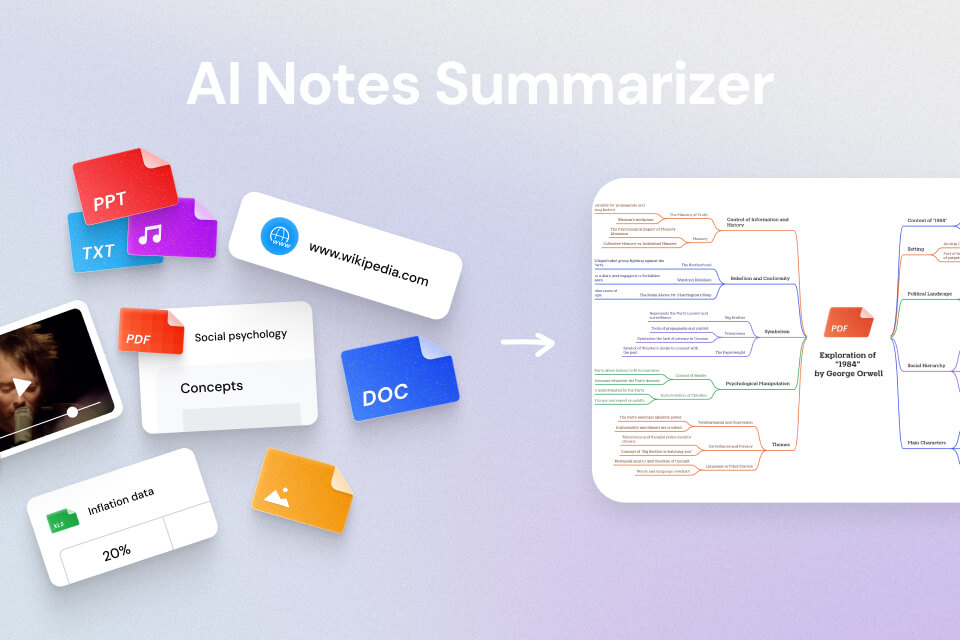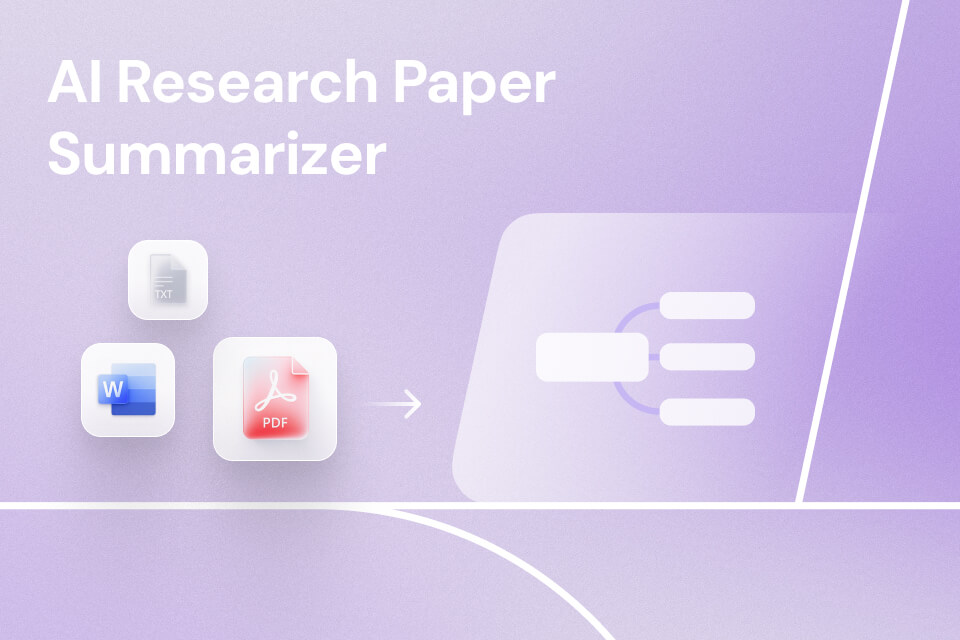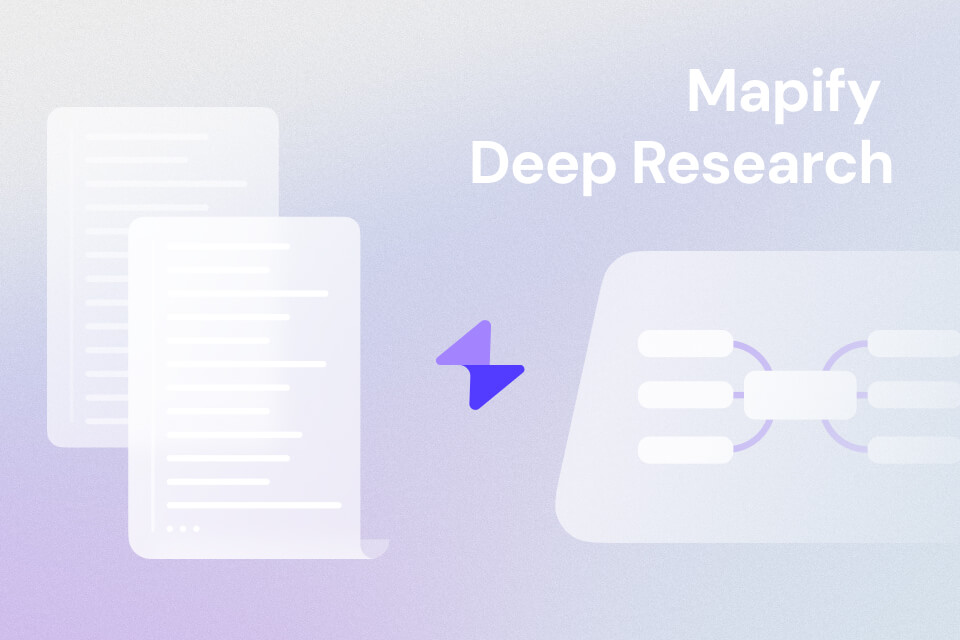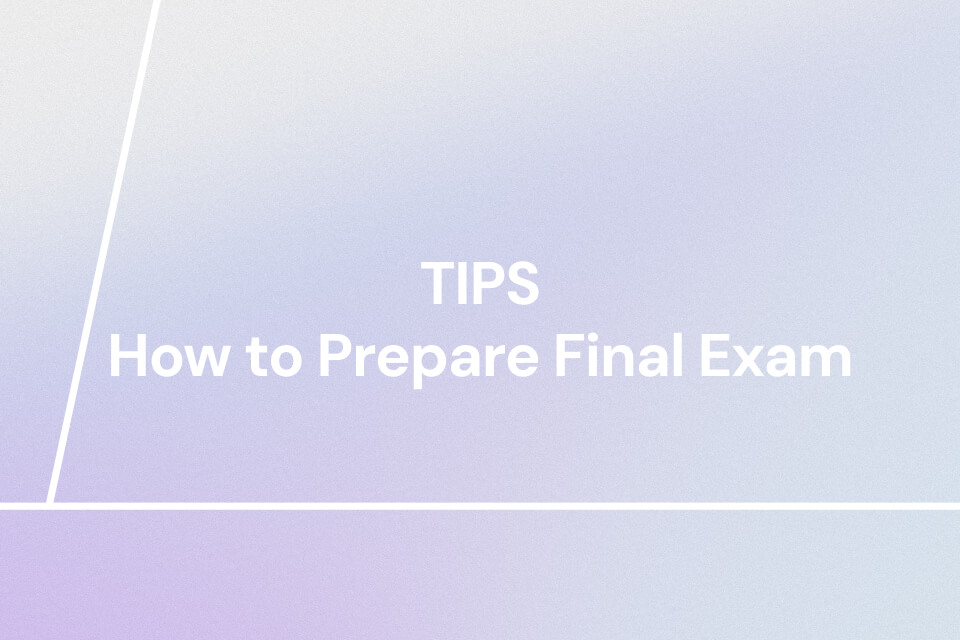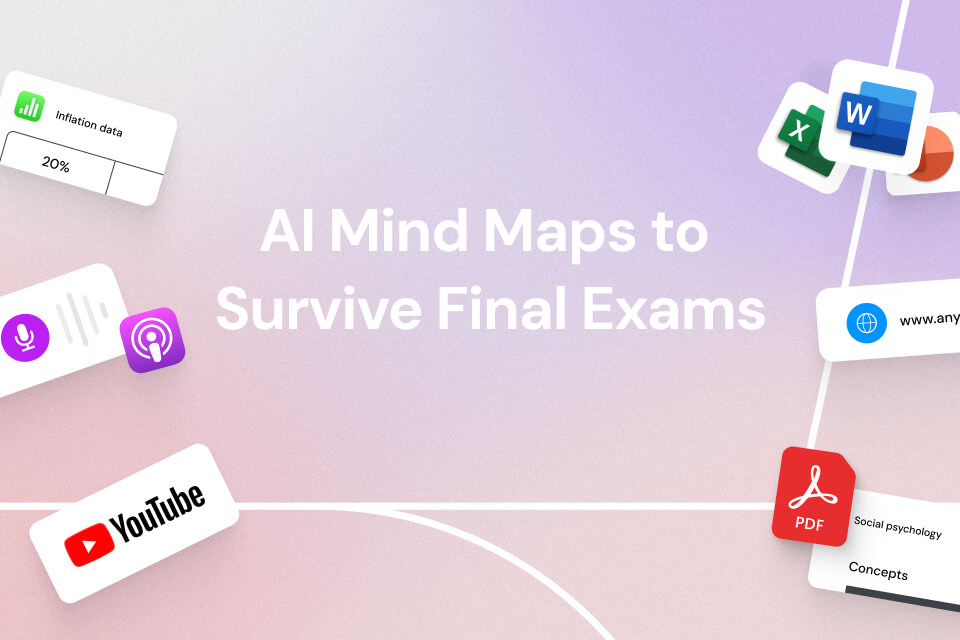Why Studying Feels Hard Today
You open your laptop with good intentions. Soon, there are many tabs, a long PDF, and a blank document. Time goes by, and nothing moves. This is not a motivation problem. It is a structural problem. When you plan the path first, every minute has a clear job. Your brain stops switching and starts building. This guide shows a simple way to organize study work and the AI tools that remove friction at each step. The goal is not more hours. The goal is better flow and steady progress.
How to Study Efficiently and Scientifically
Think in five short steps. Move in order. Keep the loop tight.
- Define the goal: Write one clear sentence. What will you learn or deliver today?
- Collect just enough sources: Start with two or three credible items. Open them. Stop and move on.
- Make the structure visible: Turn ideas into a map or outline. See claim, evidence, and gaps.
- Practice active recall: Close the text. Explain the idea in your own words. Check and fix.
- Review with spacing: Do a light pass after one day and one week. Keep notes tidy.
Two small habits keep this system alive. Use short focus blocks with short breaks. End each session with a two-minute reflection on what worked and what to change. A clear path makes tools more useful. With the steps in mind, let us add the right AI helpers at the right moment.
Instantly turn your content into mind maps with AI
Get Started NowTop 13 AI Tools That Lift Your Study Efficiency
1. Mapify – AI mind map generator
Mapify turns scattered content into a picture your brain understands fast. Paste a PDF, PPT, web page, YouTube transcript, or raw notes. Mapify builds a clean mind map that shows how ideas connect. Drag items to reorder, merge duplicates, and add missing proof. The map becomes a living outline for essays, talks, and exam review. Share it with a partner or a group. Export the map, or keep it open while you write so the structure stays visible.
How Mapify helps students:
- Instant mind map generation from notes, PDFs, slides, videos, and even research papers
- Step-by-step AI chat to spark your ideas
- Weak parts and duplicates stand out
- Auto-translation with 30+ languages
- Present your summarized mind map directly
- Easy share and export for review
Once the structure is visible, collect two strong sources without falling into a rabbit hole.
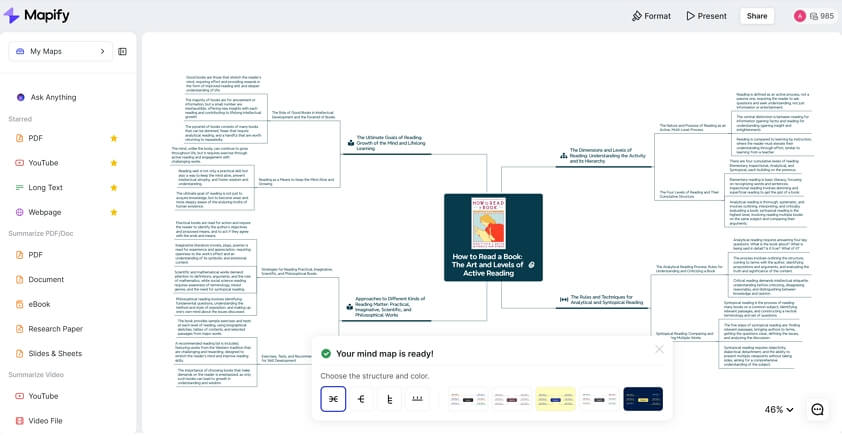
2. QuillBot – Smart Writing & Editing for Notes, Essays, & Projects
QuillBot is an AI-powered writing assistant that turns rough drafts, lecture notes, and research materials into clear, polished writing — so studying doesn’t feel like endless editing. It helps you rewrite complex sentences, clean up grammar, and summarize long readings into quick, digestible insights. Whether you're writing essays or organizing study notes, QuillBot helps you work faster and with more confidence.
How QuillBot helps students:
- Rewrites complex ideas into clearer, more academic, or simpler language using the paraphraser
- Improves grammar & tone so assignments sound polished and professional
- Summarizes long readings into key points, making study sessions faster and easier
- Supports final submissions with citation generation, originality checks, and translation tools
Once your rough draft is down, let QuillBot clean it up so you can submit with confidence.
3. Perplexity – AI research assistant with citations
Perplexity gives a quick orientation with links you can check. Ask a question and get a short, neutral answer with sources. It works best at the start of a project when you need a fair view. You can request arguments for and against a claim to reduce bias. Pick two reliable sources and move on. This keeps the first ten minutes sharp and saves energy for reading that matters.
How Perplexity helps students:
- Answers include citations you can verify
- Balanced views in minutes
- Fast path to two strong sources
- Fewer tabs and less noise
Reading gets easier when questions meet the page itself.
4. SciSpace Copilot – AI PDF copilot for papers
SciSpace sits inside the PDF so you can ask the paper questions in plain words. It explains methods and terms and points to the exact paragraph. Ask for the main claim, the key figure, or the limits. Notes stay tied to the right spot. This shortens the jump from confusion to understanding and makes class discussion easier.
How SciSpace Copilot helps students:
- Clear answers inside the paper
- Jumps to the right paragraph or figure
- Simple explanations of hard terms
- Less stress with long readings
Good reading deserves neat records. Keep sources tidy from the start.
5. Zotero – reference manager for citations
Zotero is your memory for sources. Save papers and web pages in one click. Sort items into folders by course or project. Add short notes while you read. When you write, insert citations and a full bibliography in the right style. Share a folder for group work. Neat sources remove last-minute panic and make editing faster.
How Zotero helps students:
- Save and organize sources in one place
- Notes stay attached to each item
- Correct citations and bibliographies
- Shared folders for groups
Remember the best parts with less effort.
6. Readwise Reader – read later and spaced review
Reader gives you one calm inbox for reading. Send in PDFs, articles, and newsletters. Highlight only lines that support your claim. Key highlights resurface on a schedule so you remember more with less time. Tag items, search across everything, and export notes when you write. This turns random reading into a steady memory loop.
How Readwise Reader helps students:
- One inbox for PDFs and articles
- Highlights resurface over time
- Tags and fast search across readings
- Exports for quick writing
Now turn the structure into sentences without leaving your notes.
7. Notion AI – AI writing assistant inside your notes
Notion AI lives where your notes live. It turns a rough outline into simple talking points that use your own content. This removes blank page fear. You draft the first pass, then edit in your voice. Research, notes, and writing stay in one place, so you switch less and finish more.
How Notion helps students:
- Map headings become talking points
- Draft while you stay inside notes
- Research and writing side by side
- Smooth start for each section
When the work shifts to problem-solving, you need steps, not shortcuts.
8. Khanmigo – AI tutor for math and science
Khanmigo guides you through steps instead of dropping full answers. It builds habits you can reuse on quizzes and exams. You check your plan, fix a wrong turn, and try again. It feels like a patient tutor that cares about method, not tricks.
How Khanmigo helps students:
- Step-by-step hints you can follow
- Reusable patterns for problems
- Support between classes
- Confidence for tests and labs
Do not lose the gold from lectures and group study. Capture it once, reuse it often.
9. Otter – AI lecture recorder and transcriber
Otter records and transcribes lectures and study groups so ideas do not slip away. Search by keyword and jump to the exact moment. Copy key lines into your map or outline. Share summaries with partners. If you miss a class, the recap brings you back on track.
How Otter helps students:
- Capture key points you might miss
- Searchable transcripts with time stamps
- Quick-copy into your study map
- Shared notes for groups
A clean draft still needs polish. Fix the easy wins first.
10. Grammarly – AI grammar and style checker
Grammarly cleans your draft without taking your voice. It fixes common errors and suggests clearer sentences. Tone and tense stay steady across sections. Use it after you put real ideas on the page. Accept mechanical fixes. Keep style choices that fit your message.
How Grammarly helps students:
- Fast grammar and punctuation fixes
- Clearer flow in each paragraph
- Consistent tone from start to end
- Less stress near the deadline
Right before you submit, add a simple quality gate. Use similarity and detection as signals, not verdicts.
11. Turnitin Similarity – academic similarity checker
Turnitin finds matches to published sources and student papers. It answers a different question than detection. It shows overlap, so you can fix citations and paraphrases before you submit. Many courses require it. Use it to clean your draft and show careful sourcing.
How Turnitin helps students:
- Finds overlap with known sources
- Helps fix high-match paragraphs
- Supports proper citation and paraphrase
- Required in many classes
Right before you submit, add a simple quality gate. Use similarity and detection as signals, not verdicts.
12. GPTZero – AI detector for classrooms
GPTZero gives a quick AI versus human signal with simple highlights. It is useful as a first pass on short assignments. Treat the score as context, not proof. Use it only if your course allows it. Keep your draft versions as evidence of your process.
How GPTZero helps students:
- Fast signal on short drafts
- Flags lines to review and rewrite
- Works as a quick classroom check
- Encourages better process habits
Right before you submit, add a simple quality gate. Use similarity and detection as signals, not verdicts.
13. Originality.ai – AI detector and plagiarism checker
Originality.ai fits longer drafts and teamwork. It gives AI writing signals and also runs a plagiarism check in one place. You can keep a scan history for audit needs. Use it as a second opinion after a campus similarity check. Focus on clusters, not single lines.
How Originality helps students:
- AI signal plus plagiarism in one tool
- Scan history for accountability
- Useful for long essays and group work
- Helps target rewrites on clusters
Right before you submit, add a simple quality gate. Use similarity and detection as signals, not verdicts.
Note for readers: AI detection asks, “Does this look AI-written?” while similarity asks, “Does this match known sources?” They answer different questions. Use them as signals along with citations and your draft history.
A One-Hour Study Session You Can Copy
Minutes 0 to 10: Perplexity for a balanced overview. Save two sources to Zotero.
Minutes 10 to 25: SciSpace for two clear answers about the hardest paper. Paste the key points into your notes.
Minutes 25 to 40: Notes into Mapify. Build three top branches. Mark one gap to fill.
Minutes 40 to 55: Draft one section in Notion using your map headings. Run a quick Grammarly pass.
Minutes 55 to 60: Turnitin for a quick similarity scan. If your course allows, add a short GPTZero or Originality.ai check as a signal. Rewrite flagged clusters in your voice with sources open. Update your Mapify map to confirm claim, evidence, and counterpoints still hold.
Run this session tomorrow. You will have a real draft, not a pile of files.
Final Thoughts
Studying feels heavy when you collect and hope. It feels lighter when you plan and build. Start with a small goal. Gather only what you need. Turn everything into a map with Mapify, so the structure is visible. Draft where your notes live. Review with space. The tools here do not replace your mind. They remove friction so your mind can focus. Pick two tools and try the one-hour session tonight. Little progress wins the week. Steady weeks win the semester.
Instantly turn your content into mind maps with AI
Get Started Now
